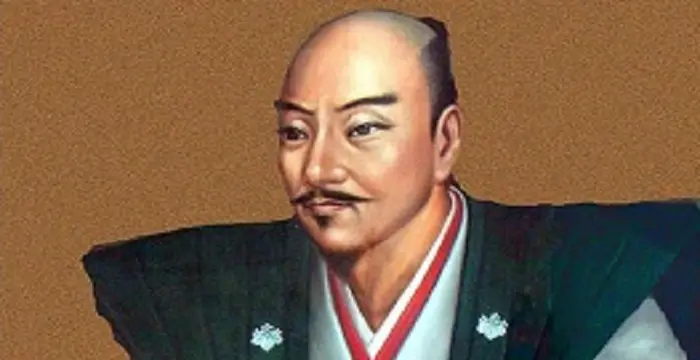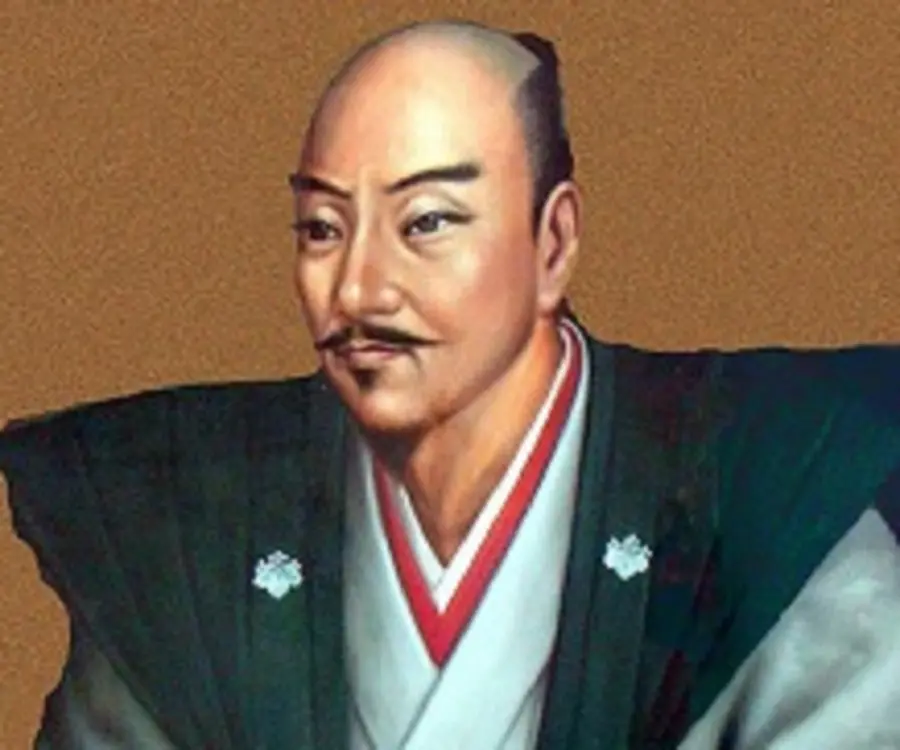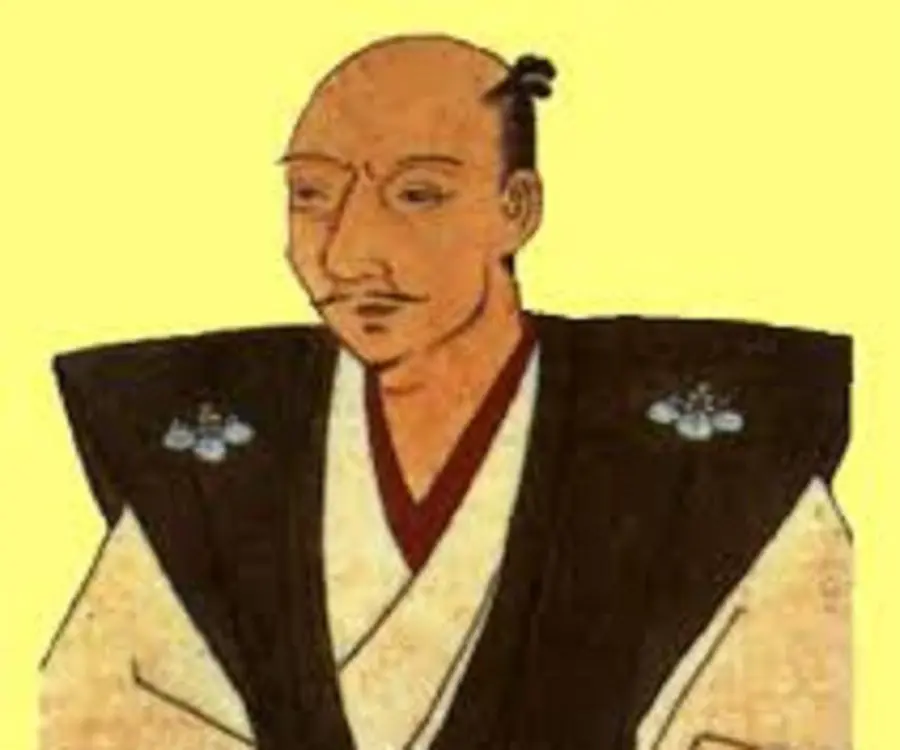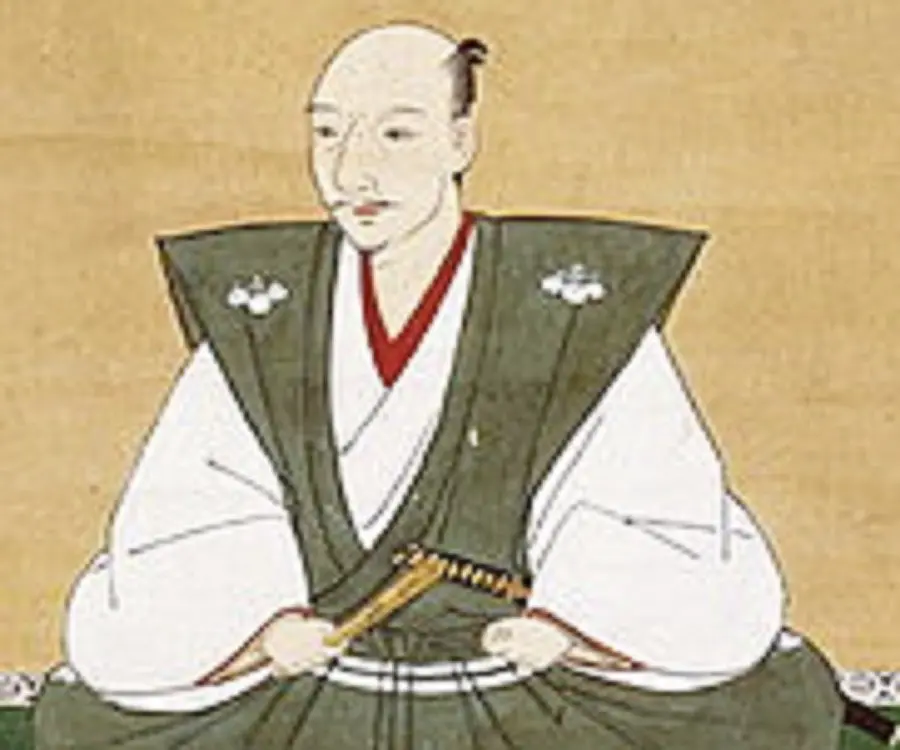
Oda Nobunaga - 16th Century Japanese Feudal Lord, Family and Life
Oda Nobunaga's Personal Details
Oda Nobunaga was one of the most controversial and powerful ‘Daimyos’ (feudal lords) of Japan who ruled in the late 16th century
| Information | Detail |
|---|---|
| Birthday | June 23, 1534 |
| Died on | June 21, 1582 |
| Nationality | Japanese |
| Famous | Historical Personalities, Emperors & Kings, 16th Century Japanese Feudal Lord, Emperors, Kings |
| Spouses | Kitsuno, Lady Saka, Nōhime |
| Siblings | Oda Hidenari, Oda Hidetaka, Oda Katagaru, Oda Nagamasu, Oda Nagatoshi, Oda Nobuharu, Oda Nobuhiro, Oda Nobukane, Oda Nobumitsu, Oda Nobuoki, Oda Nobuteru, Oda Nobutoki, Oda Nobuyuki, Oichi, Oinu no Kata |
| Childrens | Eihime, Fuyuhime, Hashiba Hidekatsu, Hideko Oda Nobunaga, Hōonin Oda Nobunaga, Oda Katsunaga, Oda Nagatsugu, Oda Nobuhide, Oda Nobukatsu, Oda Nobusada, Oda Nobutada, Oda Nobutaka, Oda Nobuyoshi, Sannomarudono, Tokuhime, Tsuruhime Oda Nobunaga |
| Birth Place | Nagoya Castle, Nagoya, Aichi Prefecture, Japan |
| Gender | Male |
| Father | Oda Nobuhide |
| Mother | Tsuchida Gozen |
| Sun Sign | Cancer |
| Born in | Nagoya Castle, Nagoya, Aichi Prefecture, Japan |
| Famous as | 16th Century Japanese Feudal Lord |
| Died at Age | 47 |
// Famous Emperors
Sundiata Keita
Sundiata Keita was the founder of the Mali Empire in West Africa. This biography profiles his childhood, early life, struggles, founding of empire, rule, administration, achievements and also gives some fun facts.
Ashoka
Ashoka was the third emperor of the Mauryan Dynasty and ruled almost the entire Indian subcontinent. This biography profiles his childhood, life, reign, achievements and timeline
Murad IV
Murad IV was one of the mighty Sultans in the history of the Ottoman Empire. This biography profiles his childhood, family, accession, rule, administration and timeline.
Oda Nobunaga's photo
Who is Oda Nobunaga?
Oda Nobunaga was one of the most controversial and powerful ‘Daimyos’ (feudal lords) of Japan who ruled in the late 16th century. He hailed from the province of Owari. He succeeded his father and assumed total power by eliminating all opposition against him, including his own uncle and brother. He forged alliances with his neighbours and propped up puppet rulers to further his expansionist aim. He used clever tactics of surprise and deception to defeat his adversaries who were superior to him in numbers. He incorporated the use of long pikes, firearms and castles to change the way wars were fought in Japan. He instituted a specialised warrior class system with ranks strictly related to fighting skills. Nobunaga was also a good administrator who turned over the economy from agricultural to manufacturing base. He built castle towns, linked by roads, to facilitate trade and move his armies. He instituted land reforms whereby land was valued in terms of produce and not area. He introduced a free market system that put an end to monopoly and brought in healthy competition. He also took interest in art and culture and built impressive monuments to project his power. Though he may be remembered for his brutality, he is credited with unifying a large portion of Japan and changing the history of the island nation forever.
// Famous Kings
Sundiata Keita
Sundiata Keita was the founder of the Mali Empire in West Africa. This biography profiles his childhood, early life, struggles, founding of empire, rule, administration, achievements and also gives some fun facts.
Ashoka
Ashoka was the third emperor of the Mauryan Dynasty and ruled almost the entire Indian subcontinent. This biography profiles his childhood, life, reign, achievements and timeline
Murad IV
Murad IV was one of the mighty Sultans in the history of the Ottoman Empire. This biography profiles his childhood, family, accession, rule, administration and timeline.
Childhood & Early Life
Oda Nobunaga was born on 23 June 1534 in the Owari province of Japan. His childhood name was Kipposhi. His father, Oda Nobuhide, was a warlord and chief of the Oda clan with large land holdings in Owari province. He was the eldest legitimate son of his father and second son of his mother, Tsuchida Gozen. In all, he had 11 brothers and two sisters.
As a child he was known for his bizarre behaviour and given the nickname, ‘Owari no Outsuke’, which meant ‘The Big Fool of Owari’. Even though his father was a clan leader, he was found playing on the streets and took a liking to ‘tanegashima’ (matchlock) firearms at a young age.
When his father died suddenly in 1551, Nobunaga is known to have behaved outrageously by throwing ceremonial incense at the altar. Due to his behaviour the people of Owari were convinced of his foolishness and were more inclined to favour his brother, Nobuyuki, as the successor of his father because he was well mannered and soft spoken compared to Nobunaga.
Nobunaga’s mentor, Hirate Masahide, was so ashamed of him that he performed ‘Seppuku’, which was a ritual of public suicide. This had a profound effect on Nobunaga, who sobered down thereafter.
Rise to Power & Subsequent Consolidation
After the death of Nobuhide, there was a power struggle among various factions in Owari. Nobunaga went into an alliance with his father’s younger brother, Nobumitsu, and killed his other uncle, Oda Nobutomo, to assume power.
He further forged an alliance with several clans from his neighbouring provinces to prevent any attacks on the borders of Owari. However, his brother, Nobuyuki went in to an alliance with his adversaries and rebelled against him twice. In the first instance his mother intervened and brought peace, but the second time Nobunaga assassinated his brother and eliminated all opposition within the province of Owari by 1559.
Nobunaga was a grand strategist. In the battle of Okehazama, he was outnumbered by a ratio of 1: 20 by the forces of Imagawa. However, he gained victory by deceiving the enemy about his own numbers and location. He then attacked with a small contingent from an unexpected direction and defeated the enemy, resulting in the death of Imagawa. He then forged an alliance with his rival clans to strengthen his position.
In 1561, when the ruler of his neighbouring province, Mino, suddenly died leaving a weak son, Saito Tatsuoki, to rule his province, Nobunaga took advantage of the situation and convinced the people of Mino to join him. He then attacked the province and forced Tatsuoki into exile.
By 1568, he made his expansionist intentions clear. In order to gain control over a larger area he went about establishing puppet rulers around him. He drove out the Miyoshi clan from Kyoto and established Yoshiaki as the Shogun of Ashikaga shogunate, but restricted his powers and used him to further his conquests.
As he gained power he became more and more brutal to achieve his aim of conquering the whole of Japan. When the Enryaku-ji monastery came in his way in 1571, he razed it to the ground killing monks, laymen, women and children without remorse. Another instance of brutality was exhibited when he set fire to the enemy stronghold after the siege of Nagashima, killing tens of thousands of helpless adversaries.
By 1574, he had vast areas of Japan under his control and established his navy to extend his reach to the other islands. However, as his kingdom expanded, so did his enemies. In 1582, his entourage was surrounded and outnumbered by his enemies forcing him to commit ‘seppuku’ to save his honour.
Oda Nobunaga died a controversial figure in Japanese history. It is often debated whether he was a hero who unified Japan or was he just a power hungry brutal ruler. Whatever people may say, there was a method in his madness that changed the history of Japan forever.
Achievements
Nobunaga changed the way wars were fought in Japan by integrating the use of long pikes, firearms and castles in prolonged war. He also instituted a specialised warrior class system with ranks related to fighting ability.
Besides being a great warrior he was also a good administrator. He started the system of division of land not as per area, but as per the produce of the land.
He turned over the economy from an agricultural base to a manufacturing base, with castle towns linked by roads to facilitate trade and move of his armies.
He introduced the ‘Rakuichi Rakuza’ system, which was a free market that put an end to the monopoly of a few privileged classes.
As he gained power he took interest in art and culture and built impressive monuments to project his power. The Azuchi Castle on the shores of Lake Biwa is one such example of extravagance.
Oda Nobunaga has been awarded the ‘Senior First Rank’ in Japan’s hereditary titles.
Personal Life & Legacy
Besides military conquests, he brought about an alliance with his potential rivals through the marriage of his daughter to Shingen’s son and a similar relationship between his sister and the first family of Omi Province.
He married Nohime, the daughter of Saito Dosan, as a matter of political convenience. However, he had no children from her and instead had children from his concubines, Kitsuno and Lady Saka. He had a total of 12 sons and 13 daughters, some of whom were adopted.
Trivia
He expressed his desire to conquer the whole of Japan by using a personal seal that read ‘Tenka Fubu’ which meant ‘All the world by force of arms’.
He facilitated trade with neighbouring Korea and China and was interested in European culture.
He supported the establishment of Christian Churches and Jesuit missionaries under his rule.
Nobunaga appears in many fiction stories and video games, where he is mostly depicted as a demon. He is also depicted as an energetic hero in some versions.
Oda Nobunaga biography timelines
- // 23rd Jun 1534Oda Nobunaga was born on 23 June 1534 in the Owari province of Japan. His childhood name was Kipposhi. His father, Oda Nobuhide, was a warlord and chief of the Oda clan with large land holdings in Owari province. He was the eldest legitimate son of his father and second son of his mother, Tsuchida Gozen. In all, he had 11 brothers and two sisters.
- // 1551When his father died suddenly in 1551, Nobunaga is known to have behaved outrageously by throwing ceremonial incense at the altar. Due to his behaviour the people of Owari were convinced of his foolishness and were more inclined to favour his brother, Nobuyuki, as the successor of his father because he was well mannered and soft spoken compared to Nobunaga.
- // 1559He further forged an alliance with several clans from his neighbouring provinces to prevent any attacks on the borders of Owari. However, his brother, Nobuyuki went in to an alliance with his adversaries and rebelled against him twice. In the first instance his mother intervened and brought peace, but the second time Nobunaga assassinated his brother and eliminated all opposition within the province of Owari by 1559.
- // 1561In 1561, when the ruler of his neighbouring province, Mino, suddenly died leaving a weak son, Saito Tatsuoki, to rule his province, Nobunaga took advantage of the situation and convinced the people of Mino to join him. He then attacked the province and forced Tatsuoki into exile.
- // 1568By 1568, he made his expansionist intentions clear. In order to gain control over a larger area he went about establishing puppet rulers around him. He drove out the Miyoshi clan from Kyoto and established Yoshiaki as the Shogun of Ashikaga shogunate, but restricted his powers and used him to further his conquests.
- // 1571As he gained power he became more and more brutal to achieve his aim of conquering the whole of Japan. When the Enryaku-ji monastery came in his way in 1571, he razed it to the ground killing monks, laymen, women and children without remorse. Another instance of brutality was exhibited when he set fire to the enemy stronghold after the siege of Nagashima, killing tens of thousands of helpless adversaries.
- // 1574 To 1582By 1574, he had vast areas of Japan under his control and established his navy to extend his reach to the other islands. However, as his kingdom expanded, so did his enemies. In 1582, his entourage was surrounded and outnumbered by his enemies forcing him to commit ‘seppuku’ to save his honour.
// Famous Emperors & Kings
Sundiata Keita
Sundiata Keita was the founder of the Mali Empire in West Africa. This biography profiles his childhood, early life, struggles, founding of empire, rule, administration, achievements and also gives some fun facts.
Ashoka
Ashoka was the third emperor of the Mauryan Dynasty and ruled almost the entire Indian subcontinent. This biography profiles his childhood, life, reign, achievements and timeline
Murad IV
Murad IV was one of the mighty Sultans in the history of the Ottoman Empire. This biography profiles his childhood, family, accession, rule, administration and timeline.
Xerxes I
Xerxes I (Xerxes the Great) was the fourth and the most famous king of the Archaemenid dynasty of Persia. This biography profiles his childhood, family, personal life, life history, achievements, campaigns, administration, death and other facts.
Sargon of Akkad
Sargon of Akkad, also called ‘Sargon the Great’, ‘Sarru-Kan’ and ‘Shar-Gani-Sharri’, was the founder and first king of the Akkadian Empire. This biography profiles his childhood, life, rule, administration, timeline, and gives some fun facts.
Abdullah of Saudi Arabia
Abdullah bin Abdulaziz Al Saud was the King of Saudi Arabia from 2005 to 2015 and the third wealthiest head of state in the world. Find more facts about his life, childhood and timeline.
Oda Nobunaga's FAQ
What is Oda Nobunaga birthday?
Oda Nobunaga was born at 1534-06-23
When was Oda Nobunaga died?
Oda Nobunaga was died at 1582-06-21
Where was Oda Nobunaga died?
Oda Nobunaga was died in Honnō-ji
Which age was Oda Nobunaga died?
Oda Nobunaga was died at age 47
Where is Oda Nobunaga's birth place?
Oda Nobunaga was born in Nagoya Castle, Nagoya, Aichi Prefecture, Japan
What is Oda Nobunaga nationalities?
Oda Nobunaga's nationalities is Japanese
Who is Oda Nobunaga spouses?
Oda Nobunaga's spouses is Kitsuno, Lady Saka, Nōhime
Who is Oda Nobunaga siblings?
Oda Nobunaga's siblings is Oda Hidenari, Oda Hidetaka, Oda Katagaru, Oda Nagamasu, Oda Nagatoshi, Oda Nobuharu, Oda Nobuhiro, Oda Nobukane, Oda Nobumitsu, Oda Nobuoki, Oda Nobuteru, Oda Nobutoki, Oda Nobuyuki, Oichi, Oinu no Kata
Who is Oda Nobunaga childrens?
Oda Nobunaga's childrens is Eihime, Fuyuhime, Hashiba Hidekatsu, Hideko Oda Nobunaga, Hōonin Oda Nobunaga, Oda Katsunaga, Oda Nagatsugu, Oda Nobuhide, Oda Nobukatsu, Oda Nobusada, Oda Nobutada, Oda Nobutaka, Oda Nobuyoshi, Sannomarudono, Tokuhime, Tsuruhime Oda Nobunaga
Who is Oda Nobunaga's father?
Oda Nobunaga's father is Oda Nobuhide
Who is Oda Nobunaga's mother?
Oda Nobunaga's mother is Tsuchida Gozen
What is Oda Nobunaga's sun sign?
Oda Nobunaga is Cancer
How famous is Oda Nobunaga?
Oda Nobunaga is famouse as 16th Century Japanese Feudal Lord








